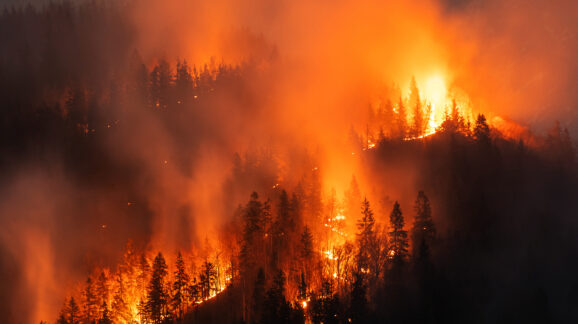Congress should recognize the importance of prescribed burns

Photo Credit: Getty
The Clean Air Act (CAA) requires the Environmental Protection Agency (EPA) to set National Ambient Air Quality Standards (NAAQS) for six major air pollutants: carbon monoxide, lead, nitrogen dioxide, ozone, particle pollution (including fine particulate matter), and sulfur dioxide.
The NAAQS are the allowable concentration levels for these pollutants in the outdoor air. Every five years, the EPA must review and if appropriate revise the different standards.
States are expected to develop plans, known as state implementation plans (SIPs), to ensure the state’s air quality is in attainment with the standards. If a state fails to submit a SIP or an adequate SIP, or fails to properly implement a SIP, then there could be negative consequences for a state from sanctions to the EPA imposing a federal implementation plan.
In some states there are events that can severely affect air quality and put the state out of attainment for one or more of the criteria pollutants. The statute recognizes these events in section 319(b) of the CAA as “exceptional events.”
If a state adequately demonstrates to the EPA that they’ve experienced an exceptional event, then the effects of that event will be disregarded when assessing air quality. This very well could represent the difference between being considered in attainment and not in attainment.
Exceptional event designations have been applied to such things as wildfires, dust storms, and volcanic eruptions. Wildfires are almost always automatically exempted.
But prescribed burns have generally not been considered exceptional events. This may be because they were not really a generally accepted practice for forest management until recently. While discussion around the importance of prescribed burns started in the 1960s and 70s, the idea of prescribed burning remained under scrutiny for decades.
Today, we know that prescribed burns are an important tool for preventing wildfires. And while states can attempt to demonstrate to the EPA that a prescribed burn is an exceptional event, they are unlikely to succeed. Fortunately, EPA Administrator Lee Zeldin has directed his staff to prioritize the allowance of prescribed burns in SIPs to address this.
But Congress needs to take action to ensure that, codified within the CAA, states are not unfairly penalized for prescribed burns. Disincentivizing their use can undermine forest management. And ironically, penalizing the use of prescribed burns can hurt air quality, which undermines the purpose of the CAA. The use of prescribed burns helps mitigate wildfires which can help with overall air quality.
If section 319(b) of the CAA expressly included language that acknowledged and appreciated the importance of prescribed burns, then the process of creating an exceptional event demonstration would be easier and more burns would get done. It would also help ensure long-lasting change since it would be codified in law.
Fortunately, Rep. Buddy Carter (R-GA), has introduced H.R.4218, the CLEAR Act, a bill that reflects the importance of prescribed burns. If passed, the bill would help prescribed burns be completed with less red tape and with less concern over states being unfairly penalized under the NAAQS process. This would result in better forest management and better air quality.